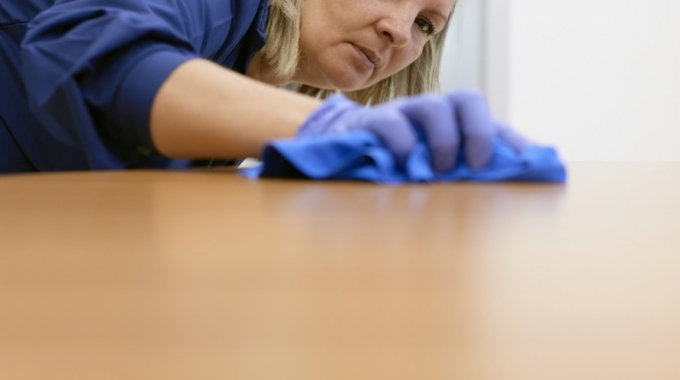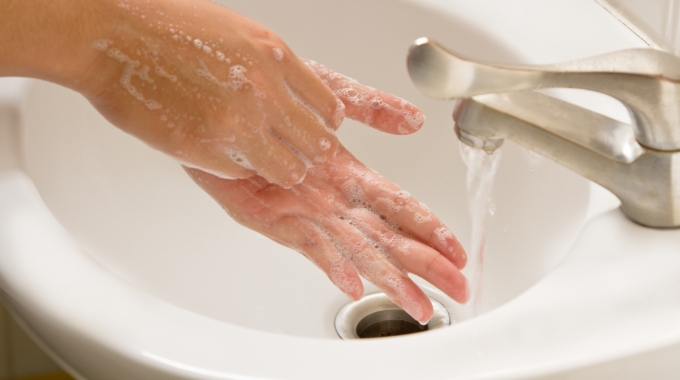In honour of World Toilet Day today, I thought I would do something a little…
United in the Battle Against Germs at Healthcare Facilities
When Amanda* started working at the local nursing home*, little did she know she would become a warrior. Yes, everyday Amanda is on the front lines of a germ warfare that is challenging her power to clean.
The tough guys like influenza, C. difficile and norovirus are wreaking havoc on Amanda’s workday and the healthcare industry. Plus, the growth of antibiotic resistant ‘superbugs’ is only making the problem worse.
And unfortunately, Amanda can’t see the enemy. It lurks on every surface, unseen by the eyes, just waiting to move to an unknowing hand. Amanda needs some of the best stuff out there to defend herself, the residents and the visitors. Household grade disinfectant wipes from the local big box store are not doing the trick. No wonder she’s losing.
If you work in a healthcare facility, hospital or nursing home, you can probably relate to Amanda’s situation. Locked in a battle, her ‘weapons of mass germ destruction’ have become ineffective. It’s time to step up her hospital sanitation standards.
So that’s where I come in, armed with the right cleaning supply ammunition and tips for hospital sanitation control.
Not All Disinfectants Are Created Equal
While disinfectant wipes from a local big box store might do the trick for home disinfecting, the same isn’t so for healthcare facilities. When it comes to two key variables — contact time and broad spectrum germ efficacy — all products are not created equal.
Let’s first address contact time. This refers the amount of time a disinfectant has to sit and dry on a surface before it is effective. For some products, the contact time can be 10 minutes. Now, picture life in a healthcare facility. Staff like Amanda are busy, moving from room to room, surface to surface and placing papers or objects down as they go about their important work. Ten minutes doesn’t seem so realistic, does it? This is why industrial grade disinfectants with a contact time of less than 5 minutes are the hospital sanitation standard. Some products offer a one-minute contact time and are considered the leader in the germ war.
The second variable is broad spectrum germ efficacy, which means the disinfectant can fight three major classes of organisms: bacteria, fungi and viruses. Again, I recommend choosing industrial grade hospital disinfectants that follow public health guidelines. These germ fighters go above and beyond to address bacterial (MRSA, VRE, etc) or viral (Norovirus, Influenza, etc) outbreaks. Plus, they clean surfaces more efficiently, which means staff like Amanda have more time to focus on other aspects of their job.
Quick Tips For Germ-Free Surfaces in Healthcare Facilities
So I’ve filled you in on what makes for an effective disinfectant. Now it’s time to tell you how to put them to use in the proper way. Here’s my quick list of tips on how to control infection in hospitals, nursing homes and long term care facilities:
-
Use DIN-registered surface disinfectants that have a contact time of less than five minutes
-
Make the ‘germ red zones’ a cleaning priority, such as IV stands, stethoscopes, bedrails, bedside tables, toilet seat handles, light switches, call buttons
-
Use disposable gloves when cleaning
-
Follow the manufacturer’s label instructions
-
Train your staff on cleaning procedures or bring in trusted experts to host a janitorial training session
Managing or preventing outbreaks in healthcare facilities is critical for the physical and emotional well-being of the staff and patients. Knowing which products to use and how to use them will not only minimize health risks, it will save time and money in the long run.
For more healthcare cleaning solutions and hospital sanitation guidelines, follow me on Twitter, join the conversation on Facebook, or reach out to Glen Martin Ltd..
*Names have been changed to protect the innocent.



